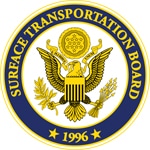WASHINGTON – Individuals choose bank savings accounts based on the interest rate offered, assuming the investment is secure because no depositor has ever lost their principal on a Federal Deposit Insurance Corp. (FDIC) backed account.
By contrast, corporate investors must consider risk of their principal along with an anticipated rate of return on their investment. Investors are more likely to invest in and/or lend to a firm displaying long-term financial sustainability.
For railroads, long-term financial sustainability is measured by revenue adequacy – earnings that cover the cost of paying investors competitive returns as well as covering the cost of efficient railroad operation.
Congress has instructed the U.S. Surface Transportation Board (STB) to make annual determinations of railroad revenue adequacy. For 2009 (the most recent STB determination of revenue adequacy), the STB determined that no major railroad was revenue adequate. A 2010 determination will be made soon.
To determine revenue adequacy, the STB annually measures a railroad’s profitability against its cost of holding and attracting investors.
The STB calculation estimates the average rate of return needed to persuade investors to provide a railroad with capital for new equipment; to maintain existing track, bridges, signal systems and other capital assets; and to fund capacity expansion. That profit must also allow the railroad to pay investors a competitive return.
Thus, only when the railroad’s rate of return on investment equals or exceeds its cost of capital is the railroad considered revenue adequate. The profits of large corporations may look immense in terms of total dollars, but investors and economists measure profit based upon return on investment. For example, a $5,000 interest payment by a bank on a savings account may seem huge, but if the $5,000 is paid on a $500,000 savings account, the return to the investor is but 1 percent and may cause the investor to shift banks in search of a better return.
This week, the STB determined that the 2010 cost of capital for railroads was 11.03 percent, up almost 6 percent (or sixth-tenths of one percentage point) from the 2009 cost-of-capital when no railroad was determined to be revenue adequate.
It will be November before the STB uses the higher cost-of-capital benchmark to determine if any railroad achieved revenue adequacy in 2010. To achieve revenue adequacy, a railroad’s profit for 2010 will have to have met or exceeded 11.03 percent. In 2009, for example, one of the most profitable railroads — Union Pacific — posted a return on investment almost two percentage points below the threshold for revenue adequacy.
Meanwhile, major railroad stocks are well off their 52-week highs, suggesting investor concern over the ability of railroads to sustain their recent levels of profitability.
The price of CSX common stock is down 30 percent from its 52-week high; Kansas City Southern is down 18 percent from its 52-week high; Norfolk Southern is down 21 percent from its 52-week high; and Union Pacific is down 23 percent from its 52-week high. BNSF is now held privately and its stock is not traded.
 The Surface Transportation Board announced today that it will hold a public hearing on April 10, 2014, to provide interested persons the opportunity to report on recent railroad service issues, review proposed solutions to existing service problems, and discuss additional options to improve service.
The Surface Transportation Board announced today that it will hold a public hearing on April 10, 2014, to provide interested persons the opportunity to report on recent railroad service issues, review proposed solutions to existing service problems, and discuss additional options to improve service. WASHINGTON – The nation’s freight rail industry this week will outline for the Surface Transportation Board (STB) the various negative impacts of a proposal to force non-market based requirements on railroads at the request of the National Industrial Transportation League (NITL). The proposal calls for the STB to override market forces by forcing Class I railroads to turn over to their competitors substantial portions of rail traffic which moves across tracks they own and have spent billions to build, maintain, and upgrade so taxpayer’s don’t have to.
WASHINGTON – The nation’s freight rail industry this week will outline for the Surface Transportation Board (STB) the various negative impacts of a proposal to force non-market based requirements on railroads at the request of the National Industrial Transportation League (NITL). The proposal calls for the STB to override market forces by forcing Class I railroads to turn over to their competitors substantial portions of rail traffic which moves across tracks they own and have spent billions to build, maintain, and upgrade so taxpayer’s don’t have to.
